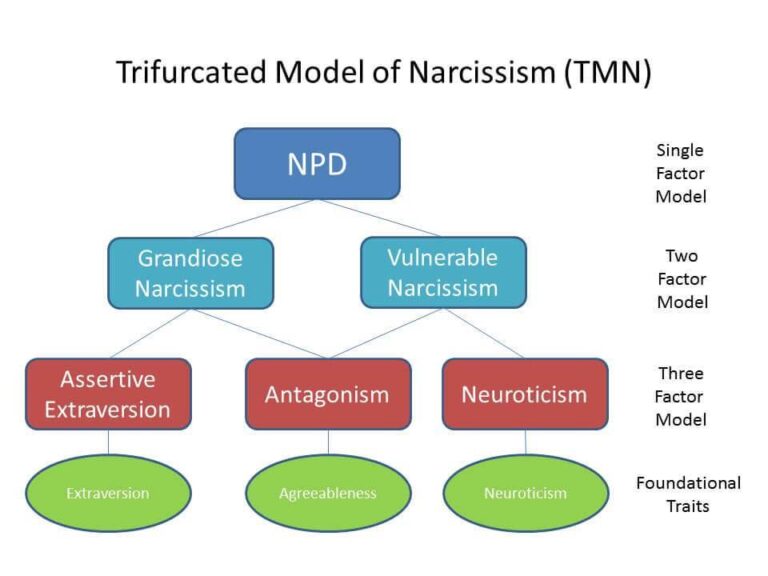Narcissism is a term that often sparks strong reactions—whether it’s used casually to describe someone’s behavior or as a clinical label in psychology. But beneath the surface of popular understanding lies a complex question: Is narcissism a fixed trait that people either have or don’t, or does it exist along a spectrum, varying in intensity and expression? In this article, we’ll delve into the nuances of narcissism, exploring its psychological foundations, how it manifests in everyday life, and what it means to consider it as a spectrum rather than a binary condition. Understanding this could reshape how we perceive ourselves and those around us, offering a more compassionate and informed perspective on human behavior.
Table of Contents
- Understanding Narcissism Beyond the Clinical Definition
- The Psychological Spectrum of Narcissistic Traits
- Identifying Healthy Confidence Versus Narcissistic Behavior
- Practical Strategies for Managing Narcissism in Relationships
- In Summary
Understanding Narcissism Beyond the Clinical Definition
When most people think of narcissism, they picture an extreme personality disorder—someone excessively self-absorbed and lacking empathy. However, narcissism extends far beyond this clinical label. It’s more accurately described as a spectrum of traits found in varying degrees within everyone. At its core, narcissism involves a focus on the self, but how this manifests can range from healthy self-confidence to harmful entitlement and manipulative behaviors. Recognizing these varied expressions can help demystify why the term is often misunderstood and stigmatized.
Within this spectrum, traits can include:
- Strong self-assurance and ambition
- Desire for admiration or external validation
- Difficulty with criticism but capacity for growth
- Lack of empathy in certain situations
Understanding narcissism beyond pathology encourages a more nuanced view, highlighting potential areas for self-reflection and development rather than outright condemnation. It invites us to consider how cultural, social, and personal factors shape the way narcissistic traits emerge and influence behavior.
The Psychological Spectrum of Narcissistic Traits
Understanding narcissistic traits as a spectrum rather than a fixed identity opens the door to a more nuanced view of human behavior. Instead of categorizing individuals strictly as narcissistic or not, this perspective acknowledges that narcissistic tendencies can vary in intensity and manifestation. Some people might display healthy self-confidence and assertiveness, while others could lean toward excessive self-absorption and entitlement. Recognizing these gradations helps in identifying when narcissism crosses into a problematic realm, such as affecting relationships, emotional regulation, or empathy.
The psychological spectrum also sheds light on the diversity of narcissistic expressions, from covert forms marked by vulnerability and hypersensitivity to overt displays characterized by arrogance and grandiosity. Key factors that influence where someone might fall on this spectrum include:
- Early childhood experiences and attachment styles
- Social and cultural influences that shape self-perception
- Underlying insecurities hidden beneath surface-level confidence
- The ability—or inability—to empathize and connect emotionally with others
By viewing narcissism through this multifaceted lens, clinicians and individuals alike can better comprehend the complexities involved and work towards more targeted interventions that promote healthier self-awareness and relationships.
Identifying Healthy Confidence Versus Narcissistic Behavior
At its core, healthy confidence is rooted in self-awareness and humility. Individuals exhibiting genuine self-assurance tend to acknowledge their strengths without dismissing their weaknesses. They often demonstrate empathy, listen actively, and balance pride in their accomplishments with a willingness to learn and grow. This form of confidence is marked by an internal validation system rather than seeking approval from others. Key indicators include:
- Self-acceptance: Embracing both talents and limitations without defensiveness.
- Respect for others: Valuing others’ opinions and feelings genuinely.
- Emotional resilience: Managing criticism constructively and maintaining composure.
On the other hand, narcissistic behavior often masquerades as confidence but stems from a fragile self-image that demands constant external validation. Unlike healthy confidence, it frequently involves manipulating situations to maintain superiority and disregard for others’ boundaries. People displaying narcissistic traits may exhibit:
- Excessive need for admiration: Relying heavily on praise to boost self-worth.
- Lack of empathy: Difficulty or unwillingness to recognize others’ emotions or perspectives.
- Grandiosity: Inflated sense of importance and entitlement, often masking insecurity.
Practical Strategies for Managing Narcissism in Relationships
When navigating relationships where narcissism plays a role, setting clear boundaries is paramount. It’s crucial to define what behavior is acceptable and what isn’t, and to communicate these limits calmly yet firmly. This doesn’t mean engaging in power struggles but rather protecting your emotional space with consistency. Also, actively practicing emotional detachment can prevent the erosion of your self-esteem; recognizing when you are being drawn into manipulation enables you to respond with reason instead of reaction. Tools like journaling or talking to a trusted support system can strengthen your clarity and resilience.
Another invaluable strategy lies in cultivating empathy — not just for the narcissistic partner, but for yourself. Understanding their behavior through the lens of unmet needs or insecurities can foster compassion, which defuses tension and promotes healthier communication patterns. However, it’s important to remember that empathy isn’t a license to tolerate abuse. Key approaches include:
- Regularly reassessing the relationship’s impact on your mental and emotional well-being
- Seeking professional guidance, such as therapy, to gain tools tailored to your unique situation
- Developing self-care routines to maintain your independence and sense of identity
These steps empower you to maintain balance and foster a connection that respects both parties’ humanity, even when narcissistic tendencies are present.
In Summary
In the end, understanding narcissism as a spectrum rather than a simple yes-or-no diagnosis allows us to approach the topic with greater nuance and empathy. It challenges us to recognize the complex ways narcissistic traits can manifest in everyday behavior—and to differentiate between healthy self-confidence and harmful self-absorption. As ongoing research continues to shed light on this multifaceted personality construct, one thing remains clear: embracing a spectrum perspective can help foster more informed conversations, better mental health support, and a deeper compassion for the diverse experiences behind the label of narcissism.

